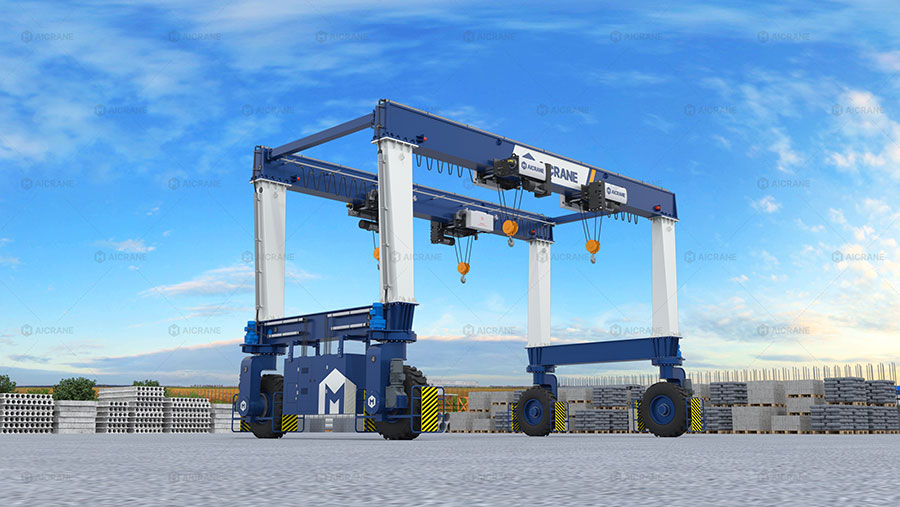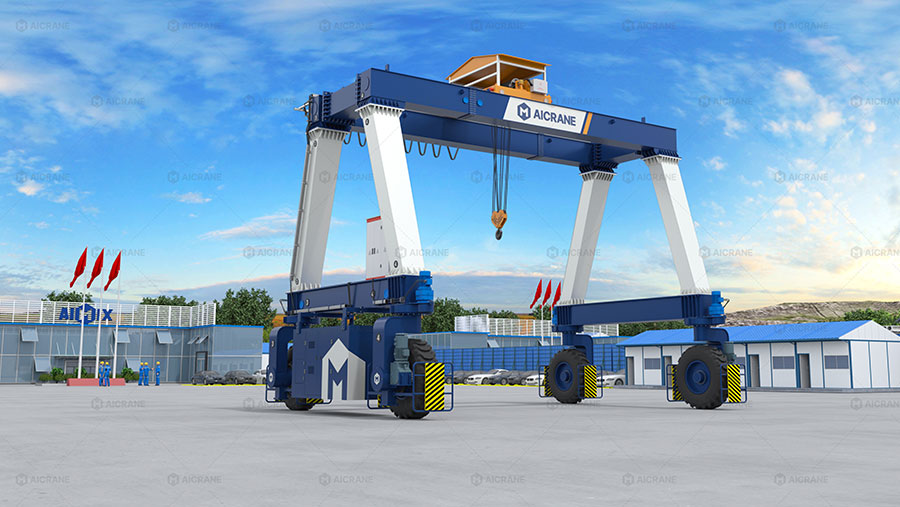Rubber tyred gantry (RTG) cranes are indispensable in container yards, intermodal terminals, manufacturing sites, and precast concrete operations. Their mobility, flexibility, and high stacking efficiency make them a popular choice for handling heavy loads. As industry demands evolve, traditional monolithic structures are giving way to modular structural designs, offering unmatched adaptability, cost-efficiency, and ease of maintenance. This article delves into the concept, advantages, engineering considerations, and future potential of modular structural design in RTG cranes.

What is Modular Structural Design in RTG Cranes?
Modular structural design refers to an engineering approach where the RTG crane’s structural components are divided into pre-engineered, standardized modules or sub-assemblies. These modules are manufactured independently and then assembled on-site. The design philosophy emphasizes flexibility, interchangeability, scalability, and ease of transportation.
A modular RTG rubber tyred gantry may consist of:
-
Main girder modules
-
Leg or support frame modules
-
Trolley runway modules
-
Steering and bogie assembly units
-
Control cabin and machinery housing modules
Each module is designed with standardized interfaces to ensure seamless assembly, structural integrity, and functional performance.
Key Advantages of Modular Structural Design
1. Improved Manufacturing Efficiency
With modularity, each section of the crane can be manufactured in parallel. This reduces lead time, streamlines production workflows, and enhances quality control, as each module undergoes independent testing.
2. Ease of Transportation and Installation
Modular components are typically easier to package and ship, especially for overseas or remote project sites. At the destination, modules are assembled using bolted or welded joints with precise alignment, reducing installation time and cost.
3. Flexibility and Scalability
A modular RTG crane design allows the crane to be customized or expanded by simply adding or modifying specific modules. For instance, a client requiring higher stacking height can upgrade just the vertical leg modules.
4. Simplified Maintenance and Upgrades
If a structural module shows wear or damage, it can be replaced without dismantling the entire movable gantry crane. Additionally, upgrading components (e.g., adding a new drive system or anti-sway module) is easier when the structure is modular.
5. Lower Lifecycle Costs
Although initial design and engineering for modular structures may be more complex, long-term benefits include reduced maintenance costs, faster replacement cycles, and better adaptability to changing operational needs.

Engineering Considerations in Modular RTG Crane Design
Designing a modular RTG crane structure requires careful attention to structural behavior, load paths, and dynamic forces to ensure safety, performance, and longevity.
1. Load Distribution and Structural Stability
Each module must withstand vertical and lateral forces independently while contributing to the overall stiffness of the crane. Finite Element Analysis (FEA) is typically used to model the interactions between modules and predict stress concentrations at joints.
2. Joint Design and Connection Integrity
One of the challenges in modular structures is designing joints that can reliably transfer loads between modules. High-strength bolts, precision welds, and anti-fatigue designs are used to ensure connections remain stable under repeated stress cycles.
3. Tolerance and Alignment
Accurate manufacturing tolerances are critical. Misalignment during assembly could result in skewed trolleys, uneven wheel loads, or stress build-up. Modular designs usually include alignment features like dowel pins, guide rails, or machined interfaces to ensure consistency.
4. Corrosion Protection and Sealing
Modular joints and interfaces are potential points of ingress for moisture and contaminants. Sealing techniques, protective coatings, and use of corrosion-resistant materials (such as galvanized steel or epoxy-coated parts) help preserve structural integrity.
5. Dynamic Performance
The crane structure must accommodate vibrations, braking forces, and wind loads without excessive deflection. Engineers perform dynamic simulations to ensure the modular design meets performance standards during acceleration, deceleration, and cornering.
Applications of Modular RTG Structural Design
– Port and Terminal Use
In large container terminals, modular RTGs are ideal for quick setup and scaling up operations. When space constraints evolve or stacking demands increase, operators can upgrade their intermodal gantry cranes by modifying existing modules.
– Precast Concrete Yards
In precast plants, modular RTG designs allow customization based on product dimensions, weight, and yard layout. For example, cranes can be adapted to lift long concrete beams by replacing cross beam modules with extended variants.
– Manufacturing and Logistics
In manufacturing or industrial settings, RTG cranes may need to move between multiple bays. Modular structures make it easier to dismantle, relocate, and reassemble cranes as needed.
Modular RTG Crane Design in Practice: A Case Study
A construction materials company in the UAE required several RTG cranes to handle 40-ton precast components across two locations. Rather than ordering two separate crane systems, the company opted for a modular RTG crane that could be disassembled and moved between sites.
The crane featured:
-
Detachable legs with bolted flanges
-
Swappable cross beam sections of different lengths
-
Quick-connect hydraulic and electrical interfaces
As a result, they reduced their capital expenditure by 25% and installation time by 40%. Additionally, the modular design allowed future upgrades to convert the crane to hybrid-electric operation.
Challenges and Solutions in Modular Design
While modularity offers numerous benefits, it also presents challenges:
-
Higher Initial Design Cost: Solved by using standardized CAD libraries and proven engineering templates.
-
Connection Complexity: Addressed by using pre-assembled kits and laser-aligned interfaces.
-
Transport Logistics: Managed through intelligent packing layouts and labeled modular crates.
By working with experienced crane manufacturers, these issues can be overcome to deliver a high-performing modular RTG solution.
Future Outlook and Innovation Potential
The future of modular RTG crane design is likely to integrate with:
-
Digital Twin Technology for lifecycle monitoring
-
IoT-based sensors embedded in modular joints
-
Self-aligning smart connectors for plug-and-play assembly
-
Sustainable materials to reduce environmental impact
As the logistics and construction industries become more dynamic, the demand for rubber tyred container gantry cranes that can evolve with operational needs will only grow. Modular RTG designs will be at the heart of this evolution.
Conclusion
Modular structural design represents a major step forward in the evolution of RTG cranes. By breaking down large, complex crane structures into manageable, standardized modules, manufacturers and users alike gain flexibility, scalability, and significant cost advantages. Whether deployed in ports, precast yards, or logistics hubs, modular RTG cranes are redefining how heavy lifting equipment is designed, delivered, and deployed. As technology and industry needs advance, modular designs will remain a cornerstone of efficient and future-ready lifting solutions.